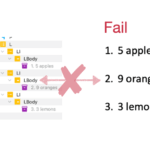PDF Declarations
ISO-standardized subsets of PDF such as PDF/A, PDF/UA and PDF/X already include identification mechanisms. However, in many cases users of PDF files would like to leverage various standards or other profiles to meet specific needs.
The PDF Declarations mechanism allows creation and editing software to declare, via a PDF Declaration, a PDF file to be in conformance with a specification or profile that may not be related to PDF technology. The specification or profile may describe or require properties specific to some or all content in the PDF document. Cases include, but are not limited to, specifications or profiles that:
- Mandate properties (e.g., accessibility specifications)
- Mandate degree of accuracy (e.g., engineering specifications)
- Set limits on content types (e.g., that all images use a specific encoding)
- Make an accountable policy statement regarding document content (e.g., pertaining to privacy regulations)
- Profile PDF for specific purposes (e.g., to archive email)
The PDF Association maintains a list of recognized PDF Declarations. By itself, the presence of a PDF Declaration does not guarantee that the document conforms to the specification or profile.
The PDF Declarations specification document includes (as embedded files) a sample PDF/A-2b document with a fake PDF Declaration and the necessary XMP Extension Schema for adding PDF Declarations to PDF/A-1, PDF/A-2, and PDF/A-3 conforming files.
NOTE: Attention is drawn to the possibility that some of the elements of this document may be the subject of patent rights. The PDF Association shall not be held responsible for identifying any or all such patent rights.
Any trade name used in this document is information given for the convenience of users and does not constitute an endorsement.

Download PDF Declarations (PDF)
This specification provides an interoperable mechanism allowing PDF files to declare conformance with 3rd party specifications.
Published by the PDF Association © 2019



